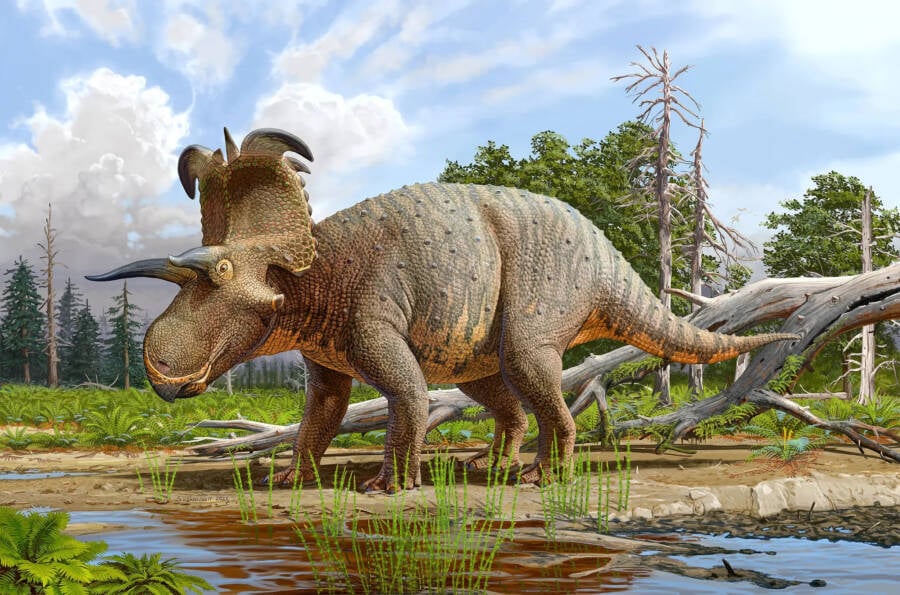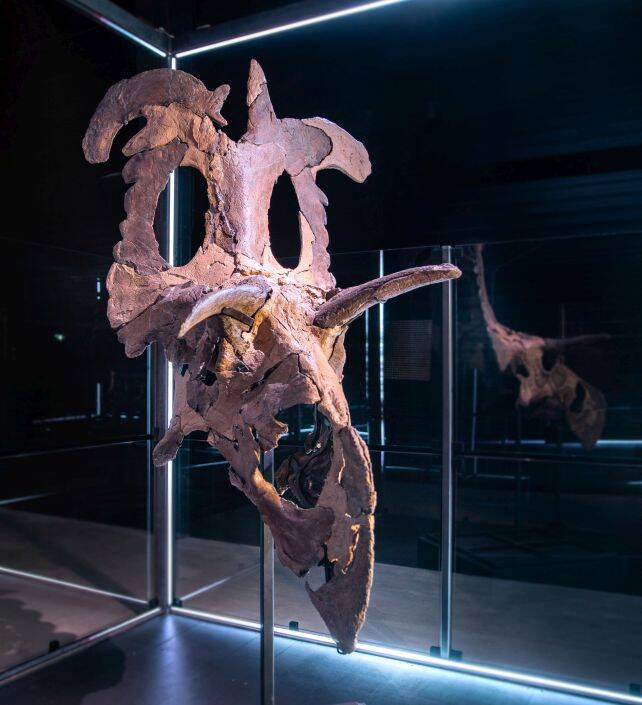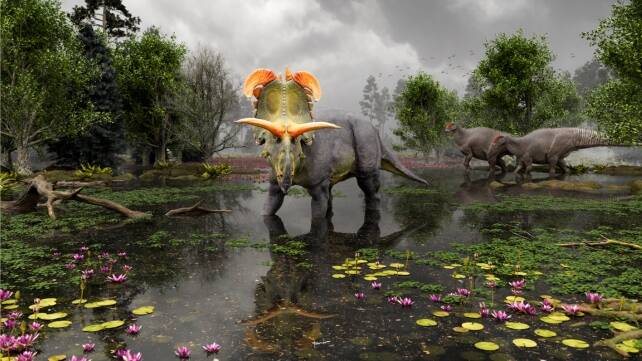The Lokiceratops rangiformis, whose relatives include the Triceratops, roamed what is now North America over 78 million years ago.

Sergey Krasovskiy / Museum of EvolutionThe Lokiceratops rangiformis, one of the largest ceratopsian dinosaurs.
In 2019, paleontologists working in Montana unearthed the fossilized remains of a strange horned dinosaur. After reconstructing the specimen, the team now believes they’ve discovered a brand new species.
Researchers named the dinosaur Lokiceratops rangiformis, or “Loki’s horned face that looks like a caribou,” a reference to the Norse god Loki. This horned behemoth is a member of the ceratopsids, a group of herbivores best known for their impressive head frills.
Now, this discovery is challenging former ideas about horned dinosaurs’ evolution and diversity over 78 million years ago.
Fossils Of A Great Horned Dinosaur Are Discovered In Montana

Andrey Atuchin / Museum of EvolutionThe reconstructed skull of the Lokiceratops rangiformis.
According to a study published in June 2024, researchers digging in the Badlands in northern Montana in 2019 unearthed the fossilized remains of the Lokiceratops rangiformis, one of the largest ceratopsian dinosaurs to ever roam the Earth.
After going through the painstaking process of putting the fossils together, researchers were astounded at the size of the Lokiceratops rangiformis’ horns.
“Reconstructing the skull of Lokiceratops from dozens of pieces was one of the most challenging projects my team and I have ever faced,” Brock Sisson, one of the study authors, stated in a press release from the University of Utah. “But the thrill of bringing a 78-million-year-old dinosaur to life for the first time was well worth the effort.”
Over 78 million years ago, the great horned Lokiceratops rangiformis would have roamed the wilds of modern-day Montana. At the time, the area was part of the Late Cretaceous island continent Laramidia and was primarily swampland and floodplains.

Fabrizio Lavezzi / Evolution MuseumAn artistic rendering of the Lokiceratops rangiformis in the swamps of modern-day Montana.
The Lokiceratops Rangiformis Reveals Its Unique Secrets

Fabrizio Lavezzi / Evolution MuseumAn artistic rendering of the dinosaur’s skull and massive horns.
Unlike other ceratopsians, the Lokiceratops rangiformis did not have a nose horn. However, like the rest of its closest relatives, the dinosaur did have a distinct bony plate, called a frill.
Not only does the Lokiceratops boast a pair of massive brow horns, but the curved, asymmetrical horns on the back of its frill are the largest ever found on a horned dinosaur.
“This new dinosaur pushes the envelope on bizarre ceratopsian headgear, sporting the largest frill horns ever seen in a ceratopsian,” Joseph Sertich of the Smithsonian Tropical Research Institute stated in the press release.
Researchers estimate that the Lokiceratops measured 22 feet in length and weighed over 11,000 pounds, roughly the same as an African bush elephant.

Loewen & Sertich et al., PeerJ, 2024, NASAThe size of the Lokiceratops rangiformis compared to human beings.
This discovery has also posed interesting questions about the diversity of ceratopsians. Previously, paleontologists believed that only two horned dinosaur species could coexist in one area at a time. In their study, researchers identified five species simultaneously living together.
“Rapid evolution may have led to the 100,000- to 200,000-year turnover of individual species of these horned dinosaurs,” stated paleontologist Mark Loewen, one of the study’s co-lead authors, according to Science Alert. “Lokiceratops helps us understand that we only are scratching the surface when it comes to the diversity and relationships within the family tree of horned dinosaurs.”
The Lokiceratops rangiformis will be on display at the Natural History Museum of Utah in Salt Lake City for the next six months.
After reading about the Lokiceratops, dive into the story of the Quetzalcoatlus, the largest flying dinosaur to ever exist. Then, read about the megalodon, the 60-foot shark that once was the ocean’s top predator.





